MaryAnn Bernal's Blog, page 238
September 15, 2014
3rd Room of Ancient Greek Tomb Revealed
By Megan Gannon
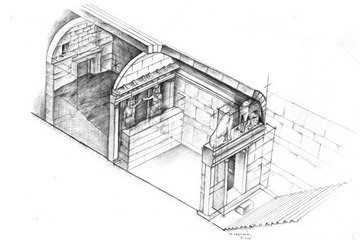
This diagram from the Greek Ministry of Culture shows what archaeologists have discovered so far inside the Kasta Hill tomb.
Credit: Greek Ministry of Culture
Archaeologists say they've had a peek inside another room in a monumental ancient tomb in Greek Macedonia that is believed to date back to the era of Alexander the Great.
The ongoing excavations at the Kasta Hill burial mound in Amphipolis — about 65 miles (104 kilometers) east of Thessaloniki — have generated excitement and speculation over what (and whom) archaeologists might find inside.
The latest images, released by the Greek Ministry of Culture yesterday (Sept. 14), show an arched, soil-filled room, with some traces of red paint on the limestone walls. The chamber lies beyond beyond the two female statues known as caryatids that were uncovered last week. [See Photos of the Alexander-Era Tomb Excavation]
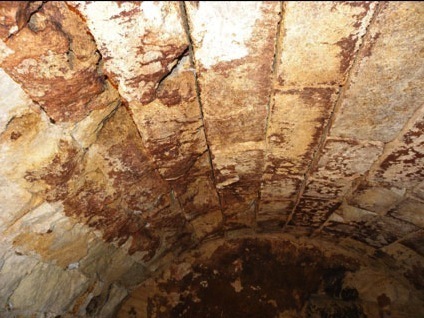
[image error] The arched ceiling of the third room inside the Kasta Hill burial complex.
Credit: Greek Ministry of Culture
View full size imageThe Kasta Hill tomb is enclosed by an enormous wall whose perimeter measures 1,600 feet (490 meters). In August, archaeologists revealed two broken sphinxes at the entrance to the burial complex. Over the past several weeks, they've been removing soil and walls of heavy sealing stones to probe deeper into the tomb. They've discovered mosaic floors, and last week, the team uncovered the wavy-haired caryatids — statues that take the place of columns or pillars — standing guard at the second doorway.
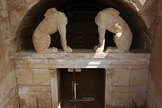
[image error] A tomb from the era of Alexander the Great in Amphipolis is guarded by two sphinxes, shown in this image released on Aug. 25, 2014, by the Greek Ministry of Culture.
Credit: Greek Ministry of Culture
View full size imageThe archaeologists, led by Katerina Peristeri, have said they believe the tomb dates back to the late fourth century B.C. and has the characteristics of a work by Dinocrates, Alexander the Great's chief architect. But excavators are unlikely to find the body of Alexander the Great himself; historical records indicate he was buried in Alexandria, though his body has never been found.
"This is an ongoing excavation; much more will be discovered as the excavation goes forward," Beth Carney, a history professor at Clemson University, told Live Science in an email. Carney, who is not involved in the excavation, said the tomb seems remarkable for its huge circumference and carved portals, but she isn't sure what evidence the archaeologists have for a late fourth century B.C. date.
The date of the tomb could prove important if archaeologists find bones inside that are tough to identify. Archaeologists have quarreled for decades over the identity of a couple buried in the lavish Macedonian tomb at Vergina in northern Greece, near the site of the early capital of the Kingdom of Macedonia. When Greek archaeologist Manolis Andronikos opened the grave (dubbed Tomb II) at Vergina in 1977, he claimed to have found the resting place of Alexander's father, Philip II, a powerful leader in his own right who paved the way for his son's conquests before he was assassinated in 336 B.C. But others have suggested that the tomb actually belonged to Philip III Arrhidaeus, Alexander's (perhaps mentally disabled) half-brother, who was executed in 317 B.C. after a less successful reign.
"The dating of all Macedonian-type tombs is contested, thanks in good part to the controversy about the date of Tomb II at Vergina," Carney said. "Ten or 20 years could make a big difference in the range of possibilities. I am guessing so far [the date for the tomb] is on the basis of stylistic similarity."
Live Science


This diagram from the Greek Ministry of Culture shows what archaeologists have discovered so far inside the Kasta Hill tomb.
Credit: Greek Ministry of Culture
Archaeologists say they've had a peek inside another room in a monumental ancient tomb in Greek Macedonia that is believed to date back to the era of Alexander the Great.
The ongoing excavations at the Kasta Hill burial mound in Amphipolis — about 65 miles (104 kilometers) east of Thessaloniki — have generated excitement and speculation over what (and whom) archaeologists might find inside.
The latest images, released by the Greek Ministry of Culture yesterday (Sept. 14), show an arched, soil-filled room, with some traces of red paint on the limestone walls. The chamber lies beyond beyond the two female statues known as caryatids that were uncovered last week. [See Photos of the Alexander-Era Tomb Excavation]

[image error] The arched ceiling of the third room inside the Kasta Hill burial complex.
Credit: Greek Ministry of Culture
View full size imageThe Kasta Hill tomb is enclosed by an enormous wall whose perimeter measures 1,600 feet (490 meters). In August, archaeologists revealed two broken sphinxes at the entrance to the burial complex. Over the past several weeks, they've been removing soil and walls of heavy sealing stones to probe deeper into the tomb. They've discovered mosaic floors, and last week, the team uncovered the wavy-haired caryatids — statues that take the place of columns or pillars — standing guard at the second doorway.

[image error] A tomb from the era of Alexander the Great in Amphipolis is guarded by two sphinxes, shown in this image released on Aug. 25, 2014, by the Greek Ministry of Culture.
Credit: Greek Ministry of Culture
View full size imageThe archaeologists, led by Katerina Peristeri, have said they believe the tomb dates back to the late fourth century B.C. and has the characteristics of a work by Dinocrates, Alexander the Great's chief architect. But excavators are unlikely to find the body of Alexander the Great himself; historical records indicate he was buried in Alexandria, though his body has never been found.
"This is an ongoing excavation; much more will be discovered as the excavation goes forward," Beth Carney, a history professor at Clemson University, told Live Science in an email. Carney, who is not involved in the excavation, said the tomb seems remarkable for its huge circumference and carved portals, but she isn't sure what evidence the archaeologists have for a late fourth century B.C. date.
The date of the tomb could prove important if archaeologists find bones inside that are tough to identify. Archaeologists have quarreled for decades over the identity of a couple buried in the lavish Macedonian tomb at Vergina in northern Greece, near the site of the early capital of the Kingdom of Macedonia. When Greek archaeologist Manolis Andronikos opened the grave (dubbed Tomb II) at Vergina in 1977, he claimed to have found the resting place of Alexander's father, Philip II, a powerful leader in his own right who paved the way for his son's conquests before he was assassinated in 336 B.C. But others have suggested that the tomb actually belonged to Philip III Arrhidaeus, Alexander's (perhaps mentally disabled) half-brother, who was executed in 317 B.C. after a less successful reign.
"The dating of all Macedonian-type tombs is contested, thanks in good part to the controversy about the date of Tomb II at Vergina," Carney said. "Ten or 20 years could make a big difference in the range of possibilities. I am guessing so far [the date for the tomb] is on the basis of stylistic similarity."
Live Science

Published on September 15, 2014 14:28
Massive 5,000-Year-Old Stone Monument Revealed in Israel
By Owen Jarus
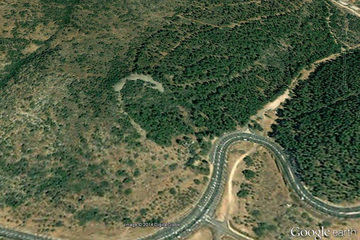
About 8 miles (13 kilometers) northwest of the Sea of Galilee, a newly identified crescent-shaped monument was built about 5,000 years ago.
Credit: Image Copyright DigitalGlobe, courtesy Google EarthA lunar-crescent-shaped stone monument that dates back around 5,000 years has been identified in Israel.
Located about 8 miles (13 kilometers) northwest of the Sea of Galilee, the structure is massive — its volume is about 14,000 cubic meters (almost 500,000 cubic feet) and it has a length of about 150 meters (492 feet), making it longer than an American football field. Pottery excavated at the structure indicates the monument dates to between 3050 B.C. and 2650 B.C., meaning it is likely older than the pyramids of Egypt. It was also built before much of Stonehengewas constructed.
Archaeologists previously thought the structure was part of a city wall, but recent work carried out by Ido Wachtel, a doctoral student at the Hebrew University of Jerusalem, indicates there is no city beside it and that the structure is a standing monument
"The proposed interpretation for the site is that it constituted a prominent landmark in its natural landscape, serving to mark possession and to assert authority and rights over natural resources by a local rural or pastoral population," Wachtel wrote in the summary of a presentation given recently at the International Congress on the Archaeology of the Ancient Near East. [See Photos of the Crescent-Shaped Monument]
The structure's crescent shape stood out in the landscape, Wachtel told Live Science in an email . The shape may have had symbolic importance, as the lunar crescent is a symbol of an ancient Mesopotamian moon god named Sin, Wachtel said.
. The shape may have had symbolic importance, as the lunar crescent is a symbol of an ancient Mesopotamian moon god named Sin, Wachtel said.
An ancient town called Bet Yerah (which translates to "house of the moon god") is located only a day's walk from the crescent-shaped monument Wachtel noted. As such, the monument may have helped mark the town's borders. While the monument is located within walking range of the city it is too far away to be an effective fortification.
Massive structure
The structure is about 150 meters (492 feet) long and 20 m (66 feet) wide at its base, and is preserved to a height of 7 m (23 feet), Wachtel's research found.
"The estimation of working days invested in the construction [of] the site is between 35,000 days in the lower estimate [and] 50,000 in the higher," Wachtel said in the email.
If the lower estimate is correct, it means a team of 200 ancient workers would have needed more than five months to construct the monument, a task that would be difficult for people who depended on crops for their livelihood. "We need to remember that people were [obligated] most of the year to agriculture," Wachtel said.
Bet Yerah
At the time this monument was built, the site of Bet Yerah was located only 18 miles (29 km) away.
Bet Yerah was a large town with a grid plan and fortification system, according to a study detailed in 2012 in the Journal of Near Eastern Archaeology. Its inhabitants traded with the early kings of Egypt, as seen from several artifacts, including a jug with a hieroglyphic inscription.
The name Bet Yerah indicates that it was associated with the moon god. However, it's uncertain whether the town actually bore this name 5,000 years ago. In the 2012 journal article, researchers said the name "Bet Yerah" was recorded in 1,500-year-old Jewish rabbinic texts and may date back much earlier.
Megalithic landscape
Other large rock structures have been found not far from the crescent-shaped monument. One structure, called Rujum el-Hiri, isin the Golan Heights (an area to the east of the Sea of Galilee) and has four circles with a cairn at its center. The date of this structure is a matter of debate; recent research by Mike Freikman, an archaeologist with the Hebrew University of Jerusalem, suggests it may predate the crescent-shaped structure by several centuries.
Another stone monument, a giant cairn that weighs more than 60,000 tons, was discovered recently beneath the waters of the Sea of Galilee. Its date is unknown, but like the crescent-shaped structure, it is located close to Bet Yerah.
Wachtel's work at the crescent-shaped monument was conducted as part of his master's thesis.Today, people living in the area call the monument by its Arabic name, Rujum en-Nabi Shua'ayb, and it is sometimes referred to as the "Jethro Cairn," a reference to the Druze prophet Jethro, who plays an important role in local folklore.
Live Science


About 8 miles (13 kilometers) northwest of the Sea of Galilee, a newly identified crescent-shaped monument was built about 5,000 years ago.
Credit: Image Copyright DigitalGlobe, courtesy Google EarthA lunar-crescent-shaped stone monument that dates back around 5,000 years has been identified in Israel.
Located about 8 miles (13 kilometers) northwest of the Sea of Galilee, the structure is massive — its volume is about 14,000 cubic meters (almost 500,000 cubic feet) and it has a length of about 150 meters (492 feet), making it longer than an American football field. Pottery excavated at the structure indicates the monument dates to between 3050 B.C. and 2650 B.C., meaning it is likely older than the pyramids of Egypt. It was also built before much of Stonehengewas constructed.
Archaeologists previously thought the structure was part of a city wall, but recent work carried out by Ido Wachtel, a doctoral student at the Hebrew University of Jerusalem, indicates there is no city beside it and that the structure is a standing monument
"The proposed interpretation for the site is that it constituted a prominent landmark in its natural landscape, serving to mark possession and to assert authority and rights over natural resources by a local rural or pastoral population," Wachtel wrote in the summary of a presentation given recently at the International Congress on the Archaeology of the Ancient Near East. [See Photos of the Crescent-Shaped Monument]
The structure's crescent shape stood out in the landscape, Wachtel told Live Science in an email
 . The shape may have had symbolic importance, as the lunar crescent is a symbol of an ancient Mesopotamian moon god named Sin, Wachtel said.
. The shape may have had symbolic importance, as the lunar crescent is a symbol of an ancient Mesopotamian moon god named Sin, Wachtel said.An ancient town called Bet Yerah (which translates to "house of the moon god") is located only a day's walk from the crescent-shaped monument Wachtel noted. As such, the monument may have helped mark the town's borders. While the monument is located within walking range of the city it is too far away to be an effective fortification.
Massive structure
The structure is about 150 meters (492 feet) long and 20 m (66 feet) wide at its base, and is preserved to a height of 7 m (23 feet), Wachtel's research found.
"The estimation of working days invested in the construction [of] the site is between 35,000 days in the lower estimate [and] 50,000 in the higher," Wachtel said in the email.
If the lower estimate is correct, it means a team of 200 ancient workers would have needed more than five months to construct the monument, a task that would be difficult for people who depended on crops for their livelihood. "We need to remember that people were [obligated] most of the year to agriculture," Wachtel said.
Bet Yerah
At the time this monument was built, the site of Bet Yerah was located only 18 miles (29 km) away.
Bet Yerah was a large town with a grid plan and fortification system, according to a study detailed in 2012 in the Journal of Near Eastern Archaeology. Its inhabitants traded with the early kings of Egypt, as seen from several artifacts, including a jug with a hieroglyphic inscription.
The name Bet Yerah indicates that it was associated with the moon god. However, it's uncertain whether the town actually bore this name 5,000 years ago. In the 2012 journal article, researchers said the name "Bet Yerah" was recorded in 1,500-year-old Jewish rabbinic texts and may date back much earlier.
Megalithic landscape
Other large rock structures have been found not far from the crescent-shaped monument. One structure, called Rujum el-Hiri, isin the Golan Heights (an area to the east of the Sea of Galilee) and has four circles with a cairn at its center. The date of this structure is a matter of debate; recent research by Mike Freikman, an archaeologist with the Hebrew University of Jerusalem, suggests it may predate the crescent-shaped structure by several centuries.
Another stone monument, a giant cairn that weighs more than 60,000 tons, was discovered recently beneath the waters of the Sea of Galilee. Its date is unknown, but like the crescent-shaped structure, it is located close to Bet Yerah.
Wachtel's work at the crescent-shaped monument was conducted as part of his master's thesis.Today, people living in the area call the monument by its Arabic name, Rujum en-Nabi Shua'ayb, and it is sometimes referred to as the "Jethro Cairn," a reference to the Druze prophet Jethro, who plays an important role in local folklore.
Live Science

Published on September 15, 2014 14:22
Ancient People of Teotihuacan Drank Milky Alcohol, Pottery Suggests
By Charles Q. Choi
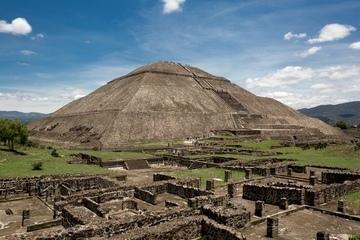
The Pyramid of the Sun in the ancient city of Teotihuacan with ruin walls in the foreground.
Credit: Barna Tanko | Shutterstock.com
Ancient pottery confirms people made and drank a milky alcoholic concoction at one of the largest cities in prehistory, Teotihuacan in Mexico, researchers say.
This liquor may have helped provide the people of this ancient metropolis with essential nutrients during frequent shortfalls in staple foods, scientists added.
The ancient city of Teotihuacan, whose name means "the city of the gods" in the Nahuatl language of the Aztecs, was the largest city in the Americas before the arrival of Christopher Columbus. At its zenith, Teotihuacan encompassed about 8 square miles (20 square kilometers) and supported an estimated population of 100,000 people, who raised giant monuments such as the Temple of Quetzalcoatl and the Pyramids of the Sun and the Moon.
Much about Teotihuacan remains unknown, including the origin and language of the people who lived there. To shed light on the mystery of this ancient city, scientists investigated what the people there might have eaten and drank. [In Photos: Human Sacrifices Discovered in Ancient City of Teotihuacan]
Corn, also known as maize, was a key crop for the people of Teotihuacan, but the low rainfall and limited groundwater resources of the area made growing maize there risky. In addition, while maize is high in calories, it contains only low concentrations of several vital nutrients, such as iron, calcium and B vitamins.
Murals in Teotihuacan depict agave plants, which are also known as maguey plants and physically resemble aloe. A number of these paintings may also depict scenes of people drinking a milky alcoholic potion known as pulque, which is made from maguey sap. (Tequila is also made from agave plants, but these liquors are made from the baked hearts of these crops, not the sap.)
Prior studies hinted that pulque might have helped keep people in Teotihuacan alive. Maguey withstands frost and drought better than maize, and pulque could have provided vital calories, most essential nutrients and probiotic bacteria.
To learn more about the diet and culture of the people of Teotihuacan, scientists analyzed more than 300 sherds, or fragments, of pottery from within and nearby the city that dated to between about A.D. 200 and 550. The researchers cleaned and ground up the potsherds, and then scanned the resulting powder for any materials that the gotten unglazed ceramic might have absorbed. They focused on residues of the alcohol-making bacterium Zymomonas mobilis, which gives pulque its punch.
"This project pushed the detection limits of absorbed organic residue analysis," said lead study author Marisol Correa-Ascencio, an archaeological chemist at the University of Bristol in England.
The scientists discovered 14 sherds with the earliest direct chemical evidence for the making of pulque in Central America. Researchers found that this fermented maguey sap may have been stored in distinctive, vaselike pottery vessels that were sealed with pine resin, as well as in other less-specialized vessels.
"These findings are a critical first step in providing new information about the subsistence patterns of the inhabitants at Teotihuacan that could not have been gathered using traditional archaeological methods," Correa-Ascencio said.
In its future research, the teamwill analyze ancient potsherds from other areas in Central America for similar residues, Correa-Ascencio said. She and her colleagues detailed their findings online Sept. 15 in the journal Proceedings of the National Academy of Sciences.
Live Science


The Pyramid of the Sun in the ancient city of Teotihuacan with ruin walls in the foreground.
Credit: Barna Tanko | Shutterstock.com
Ancient pottery confirms people made and drank a milky alcoholic concoction at one of the largest cities in prehistory, Teotihuacan in Mexico, researchers say.
This liquor may have helped provide the people of this ancient metropolis with essential nutrients during frequent shortfalls in staple foods, scientists added.
The ancient city of Teotihuacan, whose name means "the city of the gods" in the Nahuatl language of the Aztecs, was the largest city in the Americas before the arrival of Christopher Columbus. At its zenith, Teotihuacan encompassed about 8 square miles (20 square kilometers) and supported an estimated population of 100,000 people, who raised giant monuments such as the Temple of Quetzalcoatl and the Pyramids of the Sun and the Moon.
Much about Teotihuacan remains unknown, including the origin and language of the people who lived there. To shed light on the mystery of this ancient city, scientists investigated what the people there might have eaten and drank. [In Photos: Human Sacrifices Discovered in Ancient City of Teotihuacan]
Corn, also known as maize, was a key crop for the people of Teotihuacan, but the low rainfall and limited groundwater resources of the area made growing maize there risky. In addition, while maize is high in calories, it contains only low concentrations of several vital nutrients, such as iron, calcium and B vitamins.
Murals in Teotihuacan depict agave plants, which are also known as maguey plants and physically resemble aloe. A number of these paintings may also depict scenes of people drinking a milky alcoholic potion known as pulque, which is made from maguey sap. (Tequila is also made from agave plants, but these liquors are made from the baked hearts of these crops, not the sap.)
Prior studies hinted that pulque might have helped keep people in Teotihuacan alive. Maguey withstands frost and drought better than maize, and pulque could have provided vital calories, most essential nutrients and probiotic bacteria.
To learn more about the diet and culture of the people of Teotihuacan, scientists analyzed more than 300 sherds, or fragments, of pottery from within and nearby the city that dated to between about A.D. 200 and 550. The researchers cleaned and ground up the potsherds, and then scanned the resulting powder for any materials that the gotten unglazed ceramic might have absorbed. They focused on residues of the alcohol-making bacterium Zymomonas mobilis, which gives pulque its punch.
"This project pushed the detection limits of absorbed organic residue analysis," said lead study author Marisol Correa-Ascencio, an archaeological chemist at the University of Bristol in England.
The scientists discovered 14 sherds with the earliest direct chemical evidence for the making of pulque in Central America. Researchers found that this fermented maguey sap may have been stored in distinctive, vaselike pottery vessels that were sealed with pine resin, as well as in other less-specialized vessels.
"These findings are a critical first step in providing new information about the subsistence patterns of the inhabitants at Teotihuacan that could not have been gathered using traditional archaeological methods," Correa-Ascencio said.
In its future research, the teamwill analyze ancient potsherds from other areas in Central America for similar residues, Correa-Ascencio said. She and her colleagues detailed their findings online Sept. 15 in the journal Proceedings of the National Academy of Sciences.
Live Science

Published on September 15, 2014 14:16
History Trivia - temple of Jupiter on Rome's Capitoline Hill dedicated
September 15
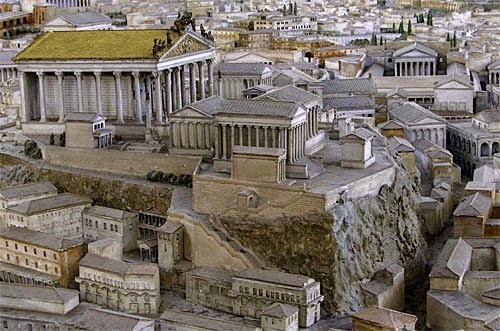
509 BC The temple of Jupiter on Rome's Capitoline Hill was dedicated on the ides of September.
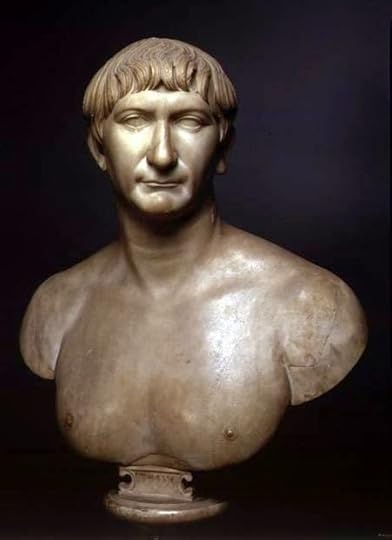
53 Trajan, Emperor of Rome 98-117, was born.

668 Eastern Roman Emperor Constans II was assassinated in his bath at Syracuse, Italy. Constans was the last emperor to become consul in 642, becoming the last Roman consul in history.
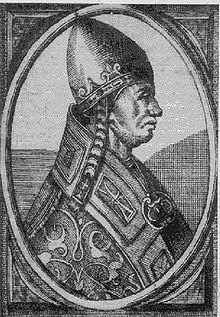
1159 Alexander III was crowned Roman Catholic pope. He is noted for laying the foundation stone for the Notre Dame de Paris.
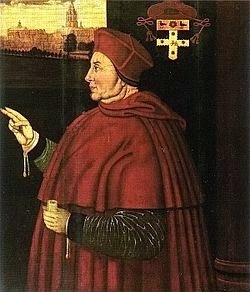
1514 Thomas Wolsey was appointed archbishop of York, the second most important seat in England. His failure to obtain an annulment of Henry VIII's marriage to Catherine of Aragon led to his downfall. He built Hampton Court Palace, which Henry VIII coveted and acquired, and was one of Henry's favorite residences.


509 BC The temple of Jupiter on Rome's Capitoline Hill was dedicated on the ides of September.

53 Trajan, Emperor of Rome 98-117, was born.

668 Eastern Roman Emperor Constans II was assassinated in his bath at Syracuse, Italy. Constans was the last emperor to become consul in 642, becoming the last Roman consul in history.

1159 Alexander III was crowned Roman Catholic pope. He is noted for laying the foundation stone for the Notre Dame de Paris.

1514 Thomas Wolsey was appointed archbishop of York, the second most important seat in England. His failure to obtain an annulment of Henry VIII's marriage to Catherine of Aragon led to his downfall. He built Hampton Court Palace, which Henry VIII coveted and acquired, and was one of Henry's favorite residences.

Published on September 15, 2014 05:35
September 14, 2014
Mr. Chuckles bumped into Billie Jones, oops, Rebecca Raisin while stirring the Wizard's Cauldron
 As an author, popular Australian Rebecca Raisin wears two significantly different hats, but one hat she wears proudly is the Wizard's Green Pointy Hat she was given the last time she was here. We're glad to have her back.
As an author, popular Australian Rebecca Raisin wears two significantly different hats, but one hat she wears proudly is the Wizard's Green Pointy Hat she was given the last time she was here. We're glad to have her back. Riding high on the success of instant romance classic "The Bookshop on the Corner", mother of two Rebecca this time turns comedian and satirist with her pseudonymous creation, Billie Jones.
The Wizard talked to Rebecca on the Wizphone about her new novel just after dropping her two rascally boys at school.
Here's what she had to say.
Rebecca Raisin's Original Interview with the Wizard
Rebecca, tell us about Billie Jones. Who is she? WHY is she?
Billie is my alter ego... She’s a little zanier than me, swears a lot, and likes surfing.
Read more

Published on September 14, 2014 11:27
My Review of Burnt Promises by Brenda Perlin

Burnt Promises is the second book in the series, which continues the saga. In this novel, the reader is drawn into the ugly world of divorce, and the toll the process takes on everyone involved. The pain of betrayal involves not only the couples but family and friends as well. The financial loss is nothing when compared to the emotional upheaval once sides are taken. A compelling read.Amazon Purchase Link

Published on September 14, 2014 05:27
FB Event - Release Day Party - Entwined by Gladys Quintal, September 15, 2014 6pm EDT
Monday, September 15at 6:00pm - 10:00pm in EDT
 https://www.facebook.com/events/641474105937959/ He walks into the kitchen and I decide to throw caution to the wind and follow him. He appears to be a bit nervous when he sees me. I walk up to him and wrap my arms around his neck.
https://www.facebook.com/events/641474105937959/ He walks into the kitchen and I decide to throw caution to the wind and follow him. He appears to be a bit nervous when he sees me. I walk up to him and wrap my arms around his neck.
“Thank you so much for being there for me tonight. I shudder to think what would have happened had it not been for you. You really are my hero.”
He squeezes me tight for a few seconds and then tries to pull away. I keep my arms around his neck and pull back enough to see his eyes. They are filled with such pain that it throws me a little.
“I’m just glad you are ok,” he replies and attempts to pull away again.
My heart is beating very fast and I decide that it is now or never. I will make the first move, then if he responds, I will know for sure how he feels. I move in closer and gently touch my lips against his. He moves back to try and avoid my kiss, but I hold him tight and push my body close to his. He lets out a soft moan, but I can feel the conflict within him. His body is stiff and he is trying not to respond to me. I softly bite his lower lip and his lower regions respond to me. I can feel his heart pounding in his chest and then suddenly his arms are around me, drawing me into him and his mouth is crushing mine. His erection is obvious as it bores into my stomach. His kiss is desperate and demanding and I am totally lost in the moment. Then he suddenly stops and pushes me away.
“I’m sorry, Addie. We can’t do this. It isn’t right.”
He pushes past me, storms into his room, and slams the door behind him. I’m bewildered and wondering what has just happened. He likes me, I know he does, so why is it so wrong? I am not a child and I’m pretty sure Janine won’t care. I can’t leave it like this. I know by the morning he will be cold and aloof again and I will never get the nerve up to confront him again. I walk over to his bedroom door, take a deep breath and turn the handle. He is sitting on his bed with his head in his hands. He looks up at me, totally distraught.
“Addie, please, just go.”
“I am not going anywhere until you tell me what the hell is going on. You like me, I know you do. I am not imagining the way you look at me and I didn’t imagine that in the kitchen just now.”
“There can never be anything between us, Addie. We are just friends, you just need to accept it. I don’t feel that way about you.”
“That’s bullshit and you know it. Now what is going on? I am pretty sure you don’t have anyone else or I would have noticed. I don’t have a boyfriend. Janine would be over the moon if we got together. I’m pretty sure you’re not gay…”
He glares at me. “No, I’m not gay.”
“Well, that was obvious from the way your body responded to me.”
He looks away. “Just leave it. You need to just move on. I cannot offer you anything other than friendship.”
I’m frustrated. He’s lying to me and I want an explanation. I kneel down in front of him and hold his head between my hands.
“Look me in the eye and tell me you don’t love me.”
“I don’t love you.”
I shake my head. “Look me in the eye and say it.”
He raises his eyes and I can see tears welling. I lean forward to kiss him and he pushes me back, so hard that I fall back and hit the wall. He stands up, tears flowing freely down his cheeks.
“Just tell me!” I scream. “Why can’t we be together? What possible reason could there be?”
Now available for pre-order on Amazon/Nook/iTunes/Kobo/Google at the introductory price of #99cents ( it will go back up to $3.99 a few days after release)!!!!!!!
US http://www.amazon.com/Entwined-Gladys-Quintal-ebook/dp/B00MQJMO70
UK http://www.amazon.co.uk/Entwined-Gladys-Quintal-ebook/dp/B00MQJMO70
AU http://www.amazon.com.au/Entwined-Gladys-Quintal-ebook/dp/B00MQJMO70
CA http://www.amazon.ca/Entwined-Gladys-Quintal-ebook/dp/B00MQJMO70
DE http://www.amazon.de/Entwined-English-Gladys-Quintal-ebook/dp/B00MQJMO70
iTunes https://itunes.apple.com/us/book/entwined/id877714438?mt=11
Nook http://www.barnesandnoble.com/w/entwined-gladys-quintal/1119478303?ean=2940045936712&itm=1&usri=gladys+quintal
Kobo http://store.kobobooks.com/en-US/ebook/entwined-16
Google https://play.google.com/store/books/details/Gladys_Quintal_Entwined?id=sypIBAAAQBAJ
 https://www.facebook.com/events/641474105937959/ He walks into the kitchen and I decide to throw caution to the wind and follow him. He appears to be a bit nervous when he sees me. I walk up to him and wrap my arms around his neck.
https://www.facebook.com/events/641474105937959/ He walks into the kitchen and I decide to throw caution to the wind and follow him. He appears to be a bit nervous when he sees me. I walk up to him and wrap my arms around his neck. “Thank you so much for being there for me tonight. I shudder to think what would have happened had it not been for you. You really are my hero.”
He squeezes me tight for a few seconds and then tries to pull away. I keep my arms around his neck and pull back enough to see his eyes. They are filled with such pain that it throws me a little.
“I’m just glad you are ok,” he replies and attempts to pull away again.
My heart is beating very fast and I decide that it is now or never. I will make the first move, then if he responds, I will know for sure how he feels. I move in closer and gently touch my lips against his. He moves back to try and avoid my kiss, but I hold him tight and push my body close to his. He lets out a soft moan, but I can feel the conflict within him. His body is stiff and he is trying not to respond to me. I softly bite his lower lip and his lower regions respond to me. I can feel his heart pounding in his chest and then suddenly his arms are around me, drawing me into him and his mouth is crushing mine. His erection is obvious as it bores into my stomach. His kiss is desperate and demanding and I am totally lost in the moment. Then he suddenly stops and pushes me away.
“I’m sorry, Addie. We can’t do this. It isn’t right.”
He pushes past me, storms into his room, and slams the door behind him. I’m bewildered and wondering what has just happened. He likes me, I know he does, so why is it so wrong? I am not a child and I’m pretty sure Janine won’t care. I can’t leave it like this. I know by the morning he will be cold and aloof again and I will never get the nerve up to confront him again. I walk over to his bedroom door, take a deep breath and turn the handle. He is sitting on his bed with his head in his hands. He looks up at me, totally distraught.
“Addie, please, just go.”
“I am not going anywhere until you tell me what the hell is going on. You like me, I know you do. I am not imagining the way you look at me and I didn’t imagine that in the kitchen just now.”
“There can never be anything between us, Addie. We are just friends, you just need to accept it. I don’t feel that way about you.”
“That’s bullshit and you know it. Now what is going on? I am pretty sure you don’t have anyone else or I would have noticed. I don’t have a boyfriend. Janine would be over the moon if we got together. I’m pretty sure you’re not gay…”
He glares at me. “No, I’m not gay.”
“Well, that was obvious from the way your body responded to me.”
He looks away. “Just leave it. You need to just move on. I cannot offer you anything other than friendship.”
I’m frustrated. He’s lying to me and I want an explanation. I kneel down in front of him and hold his head between my hands.
“Look me in the eye and tell me you don’t love me.”
“I don’t love you.”
I shake my head. “Look me in the eye and say it.”
He raises his eyes and I can see tears welling. I lean forward to kiss him and he pushes me back, so hard that I fall back and hit the wall. He stands up, tears flowing freely down his cheeks.
“Just tell me!” I scream. “Why can’t we be together? What possible reason could there be?”
Now available for pre-order on Amazon/Nook/iTunes/Kobo/Google at the introductory price of #99cents ( it will go back up to $3.99 a few days after release)!!!!!!!
US http://www.amazon.com/Entwined-Gladys-Quintal-ebook/dp/B00MQJMO70
UK http://www.amazon.co.uk/Entwined-Gladys-Quintal-ebook/dp/B00MQJMO70
AU http://www.amazon.com.au/Entwined-Gladys-Quintal-ebook/dp/B00MQJMO70
CA http://www.amazon.ca/Entwined-Gladys-Quintal-ebook/dp/B00MQJMO70
DE http://www.amazon.de/Entwined-English-Gladys-Quintal-ebook/dp/B00MQJMO70
iTunes https://itunes.apple.com/us/book/entwined/id877714438?mt=11
Nook http://www.barnesandnoble.com/w/entwined-gladys-quintal/1119478303?ean=2940045936712&itm=1&usri=gladys+quintal
Kobo http://store.kobobooks.com/en-US/ebook/entwined-16
Google https://play.google.com/store/books/details/Gladys_Quintal_Entwined?id=sypIBAAAQBAJ

Published on September 14, 2014 05:21
History Trivia - Domitian becomes Emperor of the Roman Empire
Sept 14
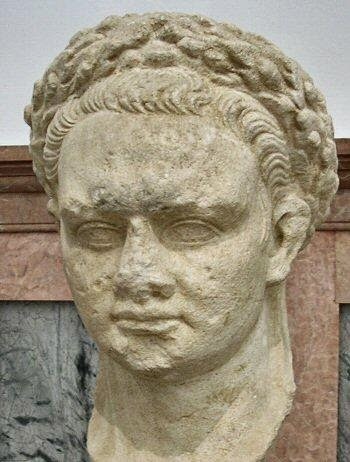
81 Domitian became Emperor of the Roman Empire upon the death of his brother Titus.

891 Pope Stephen V died. The pontificate of Stephen witnessed the disintegration of the Carolingian Empire.
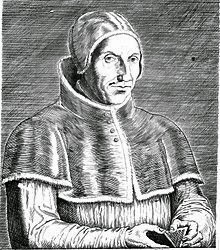
1523 Pope Adrian VI died. Adrian VI was the only Dutch pope, and the last non-Italian pope to be elected until Pope John Paul II in the twentieth century.


81 Domitian became Emperor of the Roman Empire upon the death of his brother Titus.

891 Pope Stephen V died. The pontificate of Stephen witnessed the disintegration of the Carolingian Empire.

1523 Pope Adrian VI died. Adrian VI was the only Dutch pope, and the last non-Italian pope to be elected until Pope John Paul II in the twentieth century.

Published on September 14, 2014 05:20
September 13, 2014
The Ruth Chernock Series by Kim Scott now in one edition on Kindle
 This remarkable series begins in 18th century Maine with the hanging of sweet, young Ruth. She stood accused of heinous crimes but was she guilty? This is an incredible story you will never forget!
This remarkable series begins in 18th century Maine with the hanging of sweet, young Ruth. She stood accused of heinous crimes but was she guilty? This is an incredible story you will never forget! The four books in this series follow Ruth's family through decades and generations as they endure great tragedy, struggle to remain united. A strong tale of romance, heartbreak, tragedy and survival.
Amazon Link
Amazon Review
As life slips away and insanity continues, new life thrives on.
The Ruth Chernock Series starts out with Regarding Ruth and grabs your attention right away. Within the first paragraph I was drawn into the tale and curious about this girl named Ruth.
Regarding Ruth is intriguing while the dialog feels completely real and natural. The love story that flourishes grabbed hold and I read in fury wanting to know EVERYTHING! As the story continues this becomes an emotional journey that pulls on your heartstrings and then continues to tug.
It's a gut-wrenching tale that had me emotional and glued to the pages. The writing is so precise that the scenes before me felt real and it burned. It hurt deep down inside. I felt all of it. Such a heartfelt story that affected me greatly, leaving me glued to the pages.
This story weaves a rich tale that has it's readers wanting more. The mysteries throughout this chilling plot kept coming. Once when you think you know what's going to happen you are hit with another surprise. This is a great piece of work. One that I tried to devour every chance I got.
These books caught my attention from the start and I was absorbed all the way through. This emotional tale feels very true to life and pulls on your heartstrings.
"Gently she moved down to lay her head against his chest. She listened to the steady beat of his heart and felt the stirring of a distant memory. So many nights she had been comforted by her father in the great rocker in the sitting room. With her ear to his chest she heard the great thumping of his heartbeat. She smelled the strong scent of the whiskey on his breath as he spoke soothingly with his deep voice nearly a low growl. It was the place where she felt safe and secure. No one and nothing could harm her as she rested in his arms."

Published on September 13, 2014 14:39
History Trivia - Construction of Hadrian's Wall begins
Sept 13
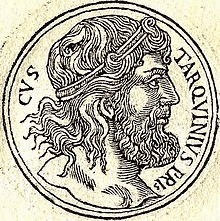
585 BC Lucius Tarquinius Priscus, king of Rome, celebrated a triumph for his victories over the Sabines, and the surrender of Collatia.
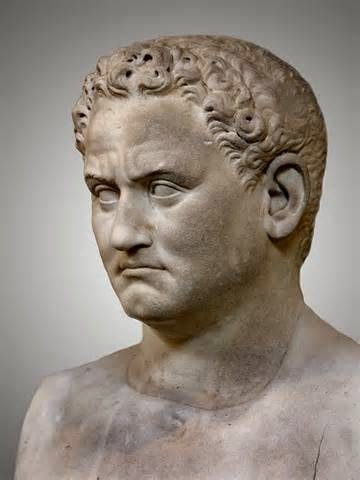
81 Roman emperor Titus, who was on the throne when Pompeii was destroyed by the eruption of Mount Vesuvius, died in Rome at age 40.
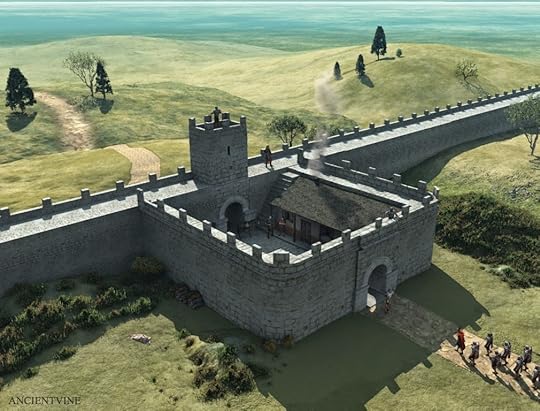
122 Construction of Hadrian's Wall began. 533 General Belisarius of the Byzantine Empire defeated Gelimer and the Vandals at the Battle of Ad Decimium, near Carthage, North Africa.
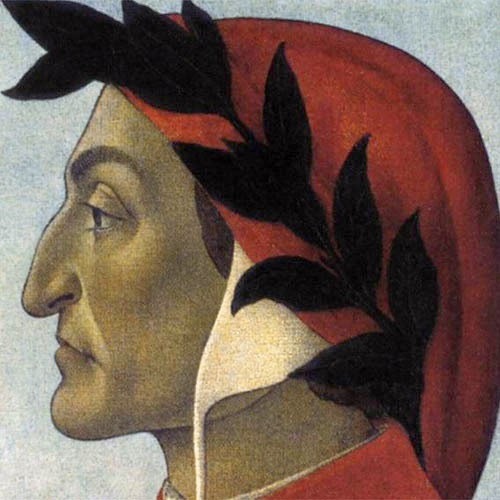
1321 Dante, author of "The Divine Comedy," died.

The Borgias
1475 Cesare Borgia was born.


585 BC Lucius Tarquinius Priscus, king of Rome, celebrated a triumph for his victories over the Sabines, and the surrender of Collatia.

81 Roman emperor Titus, who was on the throne when Pompeii was destroyed by the eruption of Mount Vesuvius, died in Rome at age 40.

122 Construction of Hadrian's Wall began. 533 General Belisarius of the Byzantine Empire defeated Gelimer and the Vandals at the Battle of Ad Decimium, near Carthage, North Africa.

1321 Dante, author of "The Divine Comedy," died.

The Borgias
1475 Cesare Borgia was born.

Published on September 13, 2014 04:59



